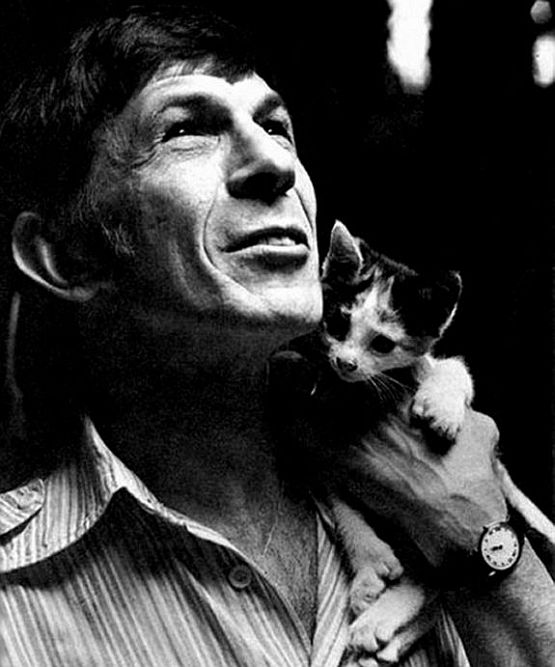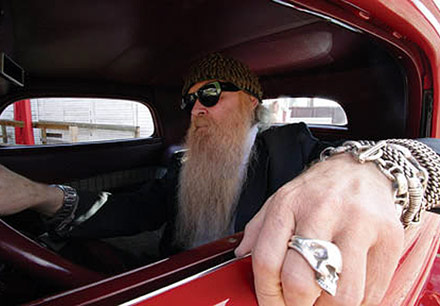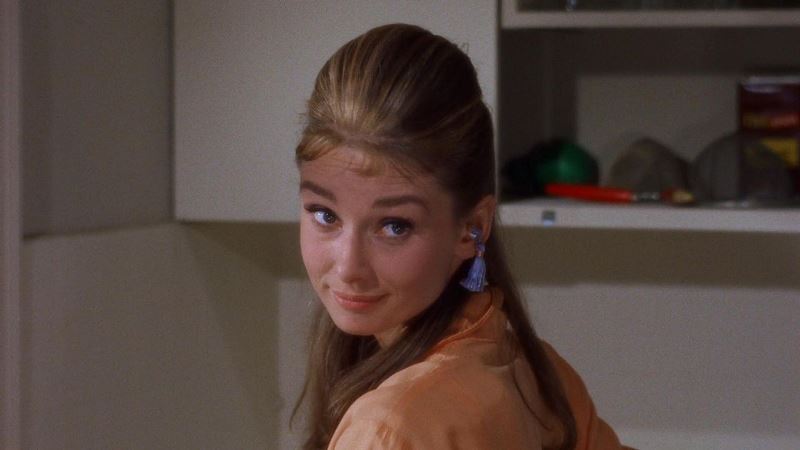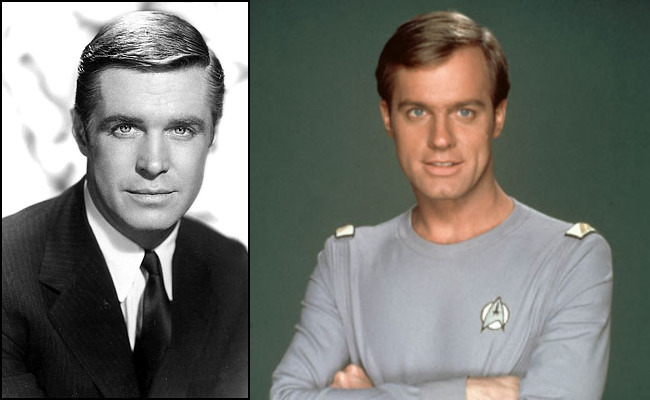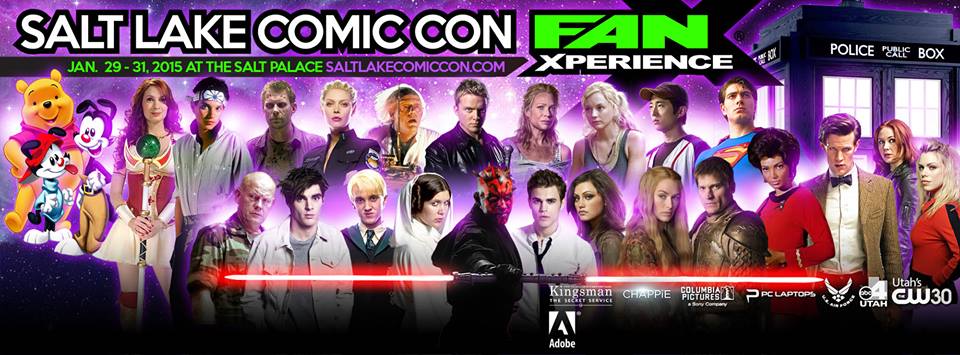“A life is like a garden. Perfect moments can be had, but not preserved, except in memory. LLAP”
— Leonard Nimoy’s final Twitter post, February 23, 2015
It isn’t often that I find myself at a loss for words, but yesterday’s news that Leonard Nimoy had died left me floundering. What do you say about the loss of a man you never met in person but who nevertheless felt like a member of your own family?
I do not remember a time when I had never seen Star Trek. That’s the plain truth. My mother has told me she and I started watching the show together when it went into syndication in the early ’70s. She wasn’t a science-fiction fan, particularly, it was just part of the afternoon block of old sitcoms, westerns, and spy shows that provided background noise while she did the housework, and I was a captive toddler audience playing on the living room rug in front of our old console TV, the one that I once fell against and split my scalp open. Why Star Trek sank its hooks so deeply into me instead of Gunsmoke or Mission Impossible is anybody’s guess, but it did. One of my earliest memories is talking to a little girl in my kindergarten class about a dream I’d had involving her and Mr. Spock, Nimoy’s signature character from that show. (You could tell a girl something like that in kindergarten without fear that she’d crush your soul with derisive laughter and then make you persona non grata with the rest of the class; such repercussions didn’t become a risk until somewhat later… fifth grade, in my experience.)
Many of my fellow travelers shared their memories on social media yesterday and they were all telling the same basic story, about how they felt like outsiders growing up, and in the half-human, half-alien Spock, they found a character to identify with, a role model who could guide them through the tricky business of finding yourself when you just don’t quite fit in. I understand why they were drawn to him, but I never identified with Spock in that way myself. Oh, I had plenty of moments when I felt like an alien among my peers. I think every kid does, even the ones who don’t prefer comic books and sci-fi paperbacks to football and dirt bikes. But I always gravitated toward Captain Kirk as my inspiration and role model. Spock was… well, if Kirk was the man I wanted to be, Spock was the friend I wanted to have. When I think of the character, that’s the first thing that comes to my mind: not his struggles to suppress, then to understand and finally to accept his human half… not his logical thinking or his trademark pointy ears or his Vulcan neck pinch, but all the times he and Kirk expressed their friendship, their fierce loyalty — their love — for one another.
In the classic episode “The City on the Edge of Forever,” Kirk and Spock are displaced in time, and a 20th century woman named Edith Keeler — played by the luscious Joan Collins — tries to figure out where these two strange men ought to be. She can’t imagine at all where Kirk belongs, but Spock, she says, she sees always at Kirk’s side. In Star Trek: The Motion Picture, after a disastrous attempt to telepathically mindmeld with the super-intelligence called V’Ger, Spock takes Kirk’s hand and tells him that “this simple feeling” — i.e., friendship — “is beyond V’Ger’s understanding.” And of course the most famous line Spock ever uttered, from his death scene in Star Trek II: The Wrath of Khan: “I have been and always shall be your friend.” (Man, I remember writing that in a lot of high school yearbooks and feeling like I was so deep and clever.) Watching that scene on YouTube yesterday morning just about ripped my heart out of my chest, and I’m not ashamed to admit I shed a few tears sitting in my cubicle on the 13th floor of a skyscraper in the heart of downtown Salt Lake City, a long way away from that living room rug in front of the TV in a little farmtown in the early 1970s. Because yesterday it felt like he was saying those words to me. Spock… Leonard… my friend… from the time I was a very small boy… saying goodbye.
There was much more to Leonard Nimoy than just Spock, of course. He appeared in many other classic television shows, from Perry Mason and The Twilight Zone to Mission: Impossible. He hosted In Search Of…, which more or less established the template still followed by countless overly credulous “documentary” shows about the unexplained. On stage, he played Sherlock Holmes and Vincent Van Gogh, and Tevye in Fiddler on the Roof. He was downright creepy in the 1978 remake of Invasion of the Body Snatchers, the rare example of a remake that’s just as effective — arguably better, in fact — than the original. And only last week, I watched him in an fun little curiosity called Baffled!, a failed TV pilot that had a lot of interesting ideas behind it but just didn’t quite come together. As a director, he scored a tremendous non-Star Trek hit with the 1987 ensemble-comedy film Three Men and a Baby. He wrote poetry. He was an accomplished photographer. And he recorded music, even though he himself admitted he wasn’t much of a singer. (Talented singer or not, his 1967 novelty tune “The Ballad of Bilbo Baggins” is bizarrely charming, unlike much of William Shatner’s musical output, which is just bizarre.) But of course it’s Spock that he will forever be associated with, a character that has so thoroughly penetrated popular culture that he’s known even to people who’ve never seen a single frame of the television series or movies he comes from.
Like his other Star Trek costars, most notably Shatner, Nimoy has at times expressed ambivalence about that silly old television show being his legacy. In the ’70s, he wrote a memoir with the somewhat-petulant title I Am Not Spock. And if you delve into the production history of the Star Trek movies, there was always a question of whether he would consent to appear, at least in the earlier ones. At one point, Spock was not included in the script for Star Trek: The Motion Picture, and the original plan around the character’s death in The Wrath of Khan was for him to stay dead. (Honestly, I’ve often thought that would’ve been a more courageous and creatively interesting path for the series to take, and possibly a healthier path for the franchise as a whole… but of course that argument is academic at this point, after three decades, four more original-cast movies, and appearances by Nimoy-as-Spock in both The Next Generation and the JJ Abrams reboot films.) But eventually Nimoy came to embrace his Vulcan alter ego, to the point that he penned a second memoir in the 1990s and called it I Am Spock, a nod to his earlier book as well as a direct refutation of its title. And he adopted a charming, sly, and self-deprecating sense of humor about the whole thing, which was nicely displayed in an Audi commercial he filmed a year or so back with Zachary Quinto, the young actor who plays Spock in the reboot films.
I’ve been fortunate enough over the past few decades, and especially since the Salt Lake Comic Cons began in 2013, to meet quite a few of the actors I grew up watching. I’ve found it genuinely fulfilling to shake their hands and tell them how much their work has meant to me, whether I’m talking to Adrian Paul from Highlander: The Series or Erin Gray from Buck Rogers or Bruce Campbell of Evil Dead fame or Danny Glover from… well, all kinds of things. But my experience of meeting people associated with the original Star Trek has been on a whole different plane from the others, and almost shockingly moving for me. Of the seven main cast members, I’ve met four: Shatner, Nichelle Nichols (Uhura), the late James Doohan (Scotty), and the irrepressible George Takei (Sulu). Sadly, I never got the chance to meet DeForest Kelley, a.k.a. Dr. “Bones” McCoy, who died in 1999. And I didn’t get to meet Leonard either, although I kinda-sorta came close. He was invited to the last Salt Lake Comic Con, in September of last year. He couldn’t come in person due to his declining health, but he did arrange to appear via Skype in a panel discussion… which Anne and I did not attend because the timing conflicted with something else at the con that we’d spent considerable money on and so were committed to doing. I did, however, buy one of the limited number of autographed photos that Leonard had sent on ahead to the convention organizers. While a cynical part of me notes that there’s no way to be sure he actually signed the photo or touched it in any way, I choose to believe in its legitimacy… and I am glad to have at least that much of him. Because I knew six months ago that it was the closest I was ever going to get to him.
Nimoy maintained an active online presence through Twitter, interacting with fans and signing every post “LLAP,” an acronym for his Spockian catchphrase, “Live long and prosper.” In recent years, he took to calling himself “Grandpa” and offering to be an honorary grandfather for anyone who cared to take him up on it. For the record, I never did… at least not formally. (I wish I had.) But when I read of his death, I felt as if I really had lost a grandfather. To be honest, I think I felt more grief yesterday than I did when I lost my real grandfathers, neither of whom I was close with. But Leonard… ah, Leonard I felt like I gotten to know, and I liked him. It’s not the loss of “Spock” I’ve been mourning. It’s the kind, good-humored old Jewish man with the quick smile and the big laugh and the unmistakable voice, the lively wit and strong sense of social justice, the celebrity who seemed genuinely concerned for his fans when he urged them to learn from his example and stay away from cigarettes…
At Spock’s funeral in Star Trek II, his friend Admiral Kirk says, “of all the souls I have encountered in my travels, his was the most… human.” And although my fellow fanboys have already turned it into a cliche to use this line in reference to Leonard Nimoy, I can’t think of anything better to sum up this actor, this icon, this man whom I really wish I’d been lucky enough to meet.

